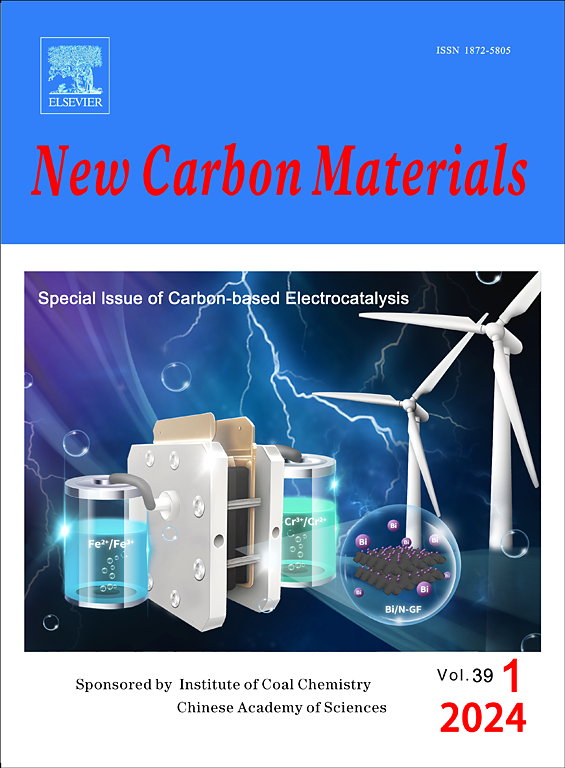A review of the carbon coating of the silicon anode in high-performance lithium-ion batteries
IF 5.7
3区 材料科学
Q2 Materials Science
引用次数: 0
Abstract
In the development of rechargeable lithium ion batteries (LIBs), silicon anodes have attracted much attention because of their extremely high theoretical capacity, relatively low Li-insertion voltage and the availability of silicon resources. However, their large volume expansion and fragile solid electrolyte interface (SEI) film hinder their commercial application. To solve these problems, Si has been combined with various carbon materials to increase their structural stability and improve their interface properties. The use of different carbon materials, such as amorphous carbon and graphite, as three-dimensional (3D) protective anode coatings that help buffer mechanical strain and isolate the electrolyte is detailed, and novel methods for applying the coatings are outlined. However, carbon materials used as a protective layer still have some disadvantages, necessitating their modification. Recent developments have focused on modifying the protective carbon shells, and substitutes for the carbon have been suggested.
高性能锂离子电池硅负极碳涂层综述
在可充电锂离子电池(LIB)的开发过程中,硅阳极因其极高的理论容量、相对较低的锂插入电压和硅资源的可获得性而备受关注。然而,硅阳极的体积膨胀大和易碎的固体电解质界面(SEI)薄膜阻碍了其商业应用。为了解决这些问题,人们将硅与各种碳材料结合起来,以增加其结构稳定性并改善其界面性能。本文详细介绍了不同碳材料(如无定形碳和石墨)作为三维(3D)阳极保护涂层的应用,这种涂层有助于缓冲机械应变和隔离电解质,并概述了应用这种涂层的新方法。然而,用作保护层的碳材料仍然存在一些缺点,因此有必要对其进行改性。最近的发展重点是对保护性碳壳进行改性,并提出了碳的替代品。
本文章由计算机程序翻译,如有差异,请以英文原文为准。
求助全文
约1分钟内获得全文
求助全文
来源期刊

New Carbon Materials
MATERIALS SCIENCE, MULTIDISCIPLINARY-
CiteScore
6.10
自引率
8.80%
发文量
3245
审稿时长
5.5 months
期刊介绍:
New Carbon Materials is a scholarly journal that publishes original research papers focusing on the physics, chemistry, and technology of organic substances that serve as precursors for creating carbonaceous solids with aromatic or tetrahedral bonding. The scope of materials covered by the journal extends from diamond and graphite to a variety of forms including chars, semicokes, mesophase substances, carbons, carbon fibers, carbynes, fullerenes, and carbon nanotubes. The journal's objective is to showcase the latest research findings and advancements in the areas of formation, structure, properties, behaviors, and technological applications of carbon materials. Additionally, the journal includes papers on the secondary production of new carbon and composite materials, such as carbon-carbon composites, derived from the aforementioned carbons. Research papers on organic substances will be considered for publication only if they have a direct relevance to the resulting carbon materials.
 求助内容:
求助内容: 应助结果提醒方式:
应助结果提醒方式:


